Global Journal of Medical and Clinical Clinical Image
Investigating the impact of selfcare stress reduction strategies on cortisol levels
Ishika M Binu*
Cite this as
Binu IM (2022) Investigating the impact of selfcare stress reduction strategies on cortisol levels. Glob J Medical Clin Case Rep 9(4): 057-062. DOI: 10.17352/2455-5282.000161Copyright License
© 2022 Binu IM. This is an open-access article distributed under the terms of the Creative Commons Attribution License, which permits unrestricted use, distribution, and reproduction in any medium, provided the original author and source are credited.It has been shown that behavioral therapy has effects on stress and also cortisol levels. This study investigated the impact of self-care stress reduction strategies on the cortisol levels of 59 urine samples. Stress behavior was evaluated by using written responses (questionnaire). Results indicated that transcendental meditation was statistically associated with the lowering of cortisol levels. Meditation can relax the mind, leading to a reduction in stress. From this study, stress and cortisol levels do have a direct correlation with one another. The data from this small pilot study raise the question of its utility as a stress marker in cardiac rehabilitation.
Introduction
Cortisol is the primary stress hormone in the human body that is produced and released from the adrenal glands in order to manage the body’s stress response [1]. This hormone regulates blood pressure, energy levels, carbohydrates, fats, proteins, inflammation and blood sugar. Cortisol is vital for the body as it impacts many organs and tissues [2]. Even though cortisol is essential for the body, the excessive production of cortisol, which is classified as Cushing Syndrome, is very dangerous and can lead to weight gain, hypertension, hirsutism, and osteoporosis [3].
Stress could be defined in psychological sciences, as a feeling of mental press and tension [4]. Low levels of stress might be desired, useful, and even healthy. However, high levels of stress could result in biological, psychological, and social problems and even serious harm to people [5]. Stress may be either external to environmental sources (loud noises, weather, crowds, temperature, pollution, jobs, crime, and war), or caused by internal perceptions of the individual [6].
A number of studies have shown that high levels of morning cortisol are associated with high-stress exposure, type A behavior, and hostility [7]. Controlling cortisol levels can be difficult as outside factors can cause either mental or physical stress [8]. Finding methods to help reduce stress is important not only for the body’s physical health but also for mental well-being. Medications have already been produced, such as Ketoconazole or Mitotane, in order to control the excessive production of cortisol [8]. Several clinical studies have reported reductions in cortisol levels after behavioral interventions to reduce stress [1,9]. People have practiced meditation in order to reduce stress, though boring but speculated to be beneficial. This study aimed at exploring the impact of meditation on stress or stress hormones like cortisol.
Research question
Can home-self-care stress reduction strategies help to manage cortisol levels?
Hypothesis: As an individual regularly practices self-care stress reduction methods, the cortisol produced in their body will be lower. The author believes this will happen for both an increase in hydration and participation in transcendental meditation because hydration can calm the body down and meditation can relax the mind, both leading to a reduction in stress. From this study, stress and cortisol levels do have a direct correlation with one another, and this is therefore why cortisol is a significant stress hormone. Therefore, the authors believe that the cortisol levels on highly stressful days will be higher than the levels on lowly stressful days. Furthermore, that morning’s cortisol levels will show higher levels in urine than any other time of day as sleep tends to relax the body while waking up acts as a quick shock into what is planned for the day.
Investigation information: The investigation was divided into 4 parts over the course of different days (a total of 44 days) for each part in order to keep the data as controlled as possible while understanding the impact of different variables on cortisol levels. Part 1 examined how cortisol levels vary throughout the day in order to understand if there is a specific time in which more cortisol is released from the adrenal glands and what time cortisol levels should be measured for the remaining portion of the investigation. Part 2 examined how cortisol levels vary between highly stressful days and lowly stressful days in order to confirm the correlation between stress and cortisol production. Part 3 explored the impact of one natural self-care method, hydration, on cortisol levels to determine if the method is a possible cortisol management tool. Part 4 explored the impact of another natural self-care method, transcendental meditation, on cortisol levels to determine if the method is a possible cortisol management tool (Table 1).
Materials and methods
A total of 59 at-home cortisol strips were used for cortisol levels investigation using the at-home cortisol app.
Collection of urine sample
A sterile container was used to collect urine, with 1 at-home cortisol urine test strip dipped and allowed to develop for 3-5 minutes. The strip was scanned using the at-home cortisol app. The variables were estimated through the at-home cortisol app displays (Figure 1).
Cortisol levels throughout the day (5 days and 20 at-home cortisol strips)
An at-home cortisol urine strip was taken throughout the day at 7:00 AM, 1:00 PM, 4:00 PM, and 9:00 PM. The strips were allowed for 3 - 5 minutes. The strips were scanned. The tests were repeated for at least 5 days.
Cortisol levels during highly stressful days vs. lowly stressful days (10 days and 10 at-home cortisol strips)
A relatively stressful day was quantified into high or low. A at-home cortisol urine strip at 7:00 AM on a classified day was dipped in the urine. The strips were allowed for 3 - 5 minutes. The strips were scanned. The cortisol levels were recorded as either a high-stress day or a low-stress day. The tests were repeated for 5 high-stress days and 5 low-stress days.
Hydration vs. Cortisol levels (15 days and 15 at-home cortisol strips)
Portions of water were drunk on different days. The recommended amount of water to consume daily was 2.7 liters for women and, therefore, 2.7 L was used as the median of the amount of liquid consumed. The minimum amount of liquid consumed was only 1 L because drinking too little water in a day can cause serious harm to the body. About 1.0, 2.0, 2.7, 3.0, or 3.5 liters of water were drunk by the end of the day. The following morning at 7:00 AM, a at-home cortisol urine strip was dipped in the urine and allowed for 3-5 minutes. The strips were scanned and the cortisol levels were recorded, including the hydration level (Figure 2). The tests were repeated for 3 days for each amount of liquid consumed (1.0, 2.0, 2.7, 3.0, or 2.5 L).
Meditation and cortisol levels (14 days and 14 at-home cortisol strips)
About 2.7 L (the recommended amount of daily water consumption) of water was drunk throughout the day. The following morning at 7:00 AM, a at-home cortisol urine strip (Figure 3) was dipped in the urine and allowed for 3 - 5 minutes. The strips were scanned and the cortisol levels were recorded. The tests were repeated for 5 days. After completing the days for pre-meditation, practice transcendental meditation for 1 hour (30 minutes in the morning and 30 minutes at night). The following morning after meditation at 7:00 AM, the at-home cortisol urine strip was dipped again into the urine and allowed to develop for 3 - 5 minutes. The strips were scanned and the post-meditation cortisol levels were recorded.
Statistical analysis
Statistical analysis was conducted using SPSS, version22.0 (Chicago, IL, USA) for the mean and frequency.
Results
Cortisol levels throughout the Day (5 days and 20 at-home cortisol strips)
The data time of the at-home cortisol urine strip and the cortisol level was described in Tables 2,3.
The cortisol levels not only vary throughout the day but were at their peak in the mornings (Figure 3).
Cortisol levels during highly stressful days vs. lowly stressful days (10 days and 10 at-home cortisol strips)
The 10 days observations of daily cortisol levels were recorded in Tables 4,5.
The average urine cortisol level during a high-stress day for me was 160 ug/L (SD = 22.36) while the average urine cortisol level during a low-stress day for me was 110 ug/L (SD = 33.54) (Figure 4).
Hydration vs. Cortisol levels (15 days and 15 at-home cortisol strips)
The 15 days of Hydration and cortisol levels were recorded in Tables 6,7.
During the 15 days of Hydration and cortisol levels, the cortisol level decreased with a higher hydration level. However, the linear correlation is not significant with an r-squared value of 0.5619 (Figure 5).
Calculation of Minimum and Maximum Gradients:
Best gradient from the line of best fit = 3125
Gradient = 3125 ± 5443.3 (for unit change of hydration)
R2 =0.5619
Meditation and cortisol levels (14 days and 14 at-home cortisol strips)
The data for mediation level which was divided into pre-meditation and post-meditation cortisol levels were recorded in Tables 8,9.
There was a clear difference in pre-meditation and post-meditation cortisol levels. The maximum value (150) and the minimum value (75) of post-meditation urine cortisol levels were significantly lower than their counterpart maximum and minimum from pre-meditation urine (Figure 6).
Discussion
As an individual regularly practices self-care stress reduction methods, the cortisol produced in their body will be lower. Cortisol levels throughout the day (5 days and 20 at-home cortisol strips) showed that as the day continued, cortisol levels decreased, and the cycle showed morning as the peak when it was repeated daily. This part of the investigation confirmed the hypothesis based on this research as the morning being at the peak. The cortisol levels during highly stressful days and lowly stressful days showed that during more stressful days, the cortisol level found in urine was higher than the cortisol levels during low-stress days, certifying the relationship between stress and cortisol levels, further aligning with the research’s hypothesis. The 15 days Hydration and cortisol levels showed a lower cortisol level but a higher hydration level. However, the linear correlation is not significant with an r-squared value of 0.5619 which concludes that the correlation was not very strong. This means the managing of hydration is not really effective in controlling cortisol levels, therefore contradicting the hypothesis. The data shows that hydration is not a major factor in stress, even though it can still have an impact. This low correlation makes sense as stress can be caused by a variety of reasons such as school or relationships. Also, the data measurements may not be accurate by themselves which can be seen in the large errors of uncertainty. First, the hydration level not only depends on the liquid consumed but also on the food consumed, though this research never standardized the food consumed on these test dates. Hydration also depends on the activities of the day, though the practical follow-up on the activities during these test days was not assessed. The data for mediation level which was divided into pre-meditation and post-meditation cortisol levels showed there was a clear difference in pre-meditation and post-meditation cortisol levels. This confirmed that cortisol levels can be naturally controlled with stress reduction methods, such as meditation, and further lead to an improvement of the body’s overall well-being. Other investigators using different patient populations utilized cortisol as a marker of stress in conjunction with the self-report of stress levels following a variety of stress-reducing interventions [1,2,8,10] Regardless of the duration, stress-related reduction programs do elicit similar positive psychological effects but with inconsistent changes in physiological measures [8,11].
Conclusion
In conclusion, self-management program such as meditation shows effectiveness in the self-report of daily stress reduction. Also, our results partially support the original hypothesis of having natural stress-reduction methods to manage cortisol. The hypothesis is only partially true as only one of the two methods tested, which was transcendental meditation, produced a strong correlation with cortisol levels. Hydration which was the other method of stress reduction demonstrated a weak correlation with cortisol levels. Even though only one method was proven to be effective in reducing cortisol levels, the findings reveal that it is possible to naturally reduce cortisol levels. Further investigations can be executed to find more possible methods to reduce the cortisol released in the body. Stress-reduction methods are important as it improves the overall well-being and quality of life of someone.
Limitations and recommendations
The current study has several limitations. First, this study had a low number of participants. Second, urine collection may be a burden for the participants. Furthermore, salivary cortisol levels have been used in many studies [12,13], self-report stress response [14] and intervention effect [1-3,15]. The collection of saliva for cortisol levels is less burdensome for the subjects as compared to urine. Third, this study was unable to verify subject compliance with the desired protocol for urine collection. Although subjects were instructed on the importance of following the study protocol, subjects were not asked to report the collection time. In spite of those attempts, it is possible that the samples were not the first morning voided urine. Fourth, this study couldn’t test cortisol levels at severe dehydration levels as it would put participants’ well-being at risk. Further scientific study is necessary in order to clearly analyze the relation between hydration level and cortisol level in humans. Fifth, Error in the at-home cortisol app and urine test; as the urine strip was scanned through the app, the data values could be slightly inaccurate or be invalid. This would impact the entirety of the investigation as cortisol level was the dependent variable measured in each part of the investigation. To further account for this issue, the investigation should be repeated with two urine test strips produced by different companies. This would allow for cross-checking the values collected from the urine test strips.
To continue expanding our understanding of cortisol, other variables that can impact cortisol levels, such as age, gender, or external illnesses should be included.
The author thanked all participants.
Consent for publication
I affirm that I have given permission for this article to be published.
- Galvin JA, Benson H, Deckro GR, Fricchione GL, Dusek JA. The relaxation response: reducing stress and improving cognition in healthy aging adults. Complement Ther Clin Pract. 2006 Aug;12(3):186-91. doi: 10.1016/j.ctcp.2006.02.004. Epub 2006 Jun 5. PMID: 16835029.
- Matousek RH, Dobkin PL, Pruessner J. Cortisol as a marker for improvement in mindfulness-based stress reduction. Complement Ther Clin Pract. 2010 Feb;16(1):13-9. doi: 10.1016/j.ctcp.2009.06.004. Epub 2009 Jul 4. PMID: 20129404.
- Roberts AD, Papadopoulos AS, Wessely S, Chalder T, Cleare AJ. Salivary cortisol output before and after cognitive behavioural therapy for chronic fatigue syndrome. J Affect Disord. 2009 May;115(1-2):280-6. doi: 10.1016/j.jad.2008.09.013. Epub 2008 Oct 19. PMID: 18937978.
- Shahsavarani AM, Abadi EAM, Kalkhoran MH. Stress: Facts and Theories through Literature Review. International Journal of Medical Reviews. 2015; 2: 230-241.
- Tucker J, Sinclair R, Mohr C, Adler A, Thomas J, Salvi A. A temporal investigation of the direct, interactive, and reverse relations between demand and control and affective strain, Work & Stress. 2008; 22: 81-95.
- Tse JL, Flin R, Mearns K. Facets of job effort in bus driver health: deconstructing "effort" in the effort-reward imbalance model. J Occup Health Psychol. 2007 Jan;12(1):48-62. doi: 10.1037/1076-8998.12.1.48. PMID: 17257066.
- Steptoe A, Cropley M, Griffith J, Kirschbaum C. Job strain and anger expression predict early morning elevations in salivary cortisol. Psychosom Med. 2000 Mar-Apr;62(2):286-92. doi: 10.1097/00006842-200003000-00022. PMID: 10772410.
- Deechakawan W, Cain KC, Jarrett ME, Burr RL, Heitkemper MM. Effect of self-management intervention on cortisol and daily stress levels in irritable bowel syndrome. Biol Res Nurs. 2013 Jan;15(1):26-36. doi: 10.1177/1099800411414047. Epub 2011 Jul 15. PMID: 21765120; PMCID: PMC3702377.
- Aboulafia-Brakha T, Suchecki D, Gouveia-Paulino F, Nitrini R, Ptak R. Cognitive-behavioural group therapy improves a psychophysiological marker of stress in caregivers of patients with Alzheimer's disease. Aging Ment Health. 2014;18(6):801-8. doi: 10.1080/13607863.2014.880406. Epub 2014 Feb 5. PMID: 24499394.
- Yehuda R, Bierer LM, Sarapas C, Makotkine I, Andrew R, Seckl JR. Cortisol metabolic predictors of response to psychotherapy for symptoms of PTSD in survivors of the World Trade Center attacks on September 11, 2001. Psychoneuroendocrinology. 2009 Oct;34(9):1304-13. doi: 10.1016/j.psyneuen.2009.03.018. Epub 2009 May 2. PMID: 19411143; PMCID: PMC2785023.
- Hansen AM, Garde AH, Skovgaard LT, Christensen JM. Seasonal and biological variation of urinary epinephrine, norepinephrine, and cortisol in healthy women. Clin Chim Acta. 2001 Jul 5;309(1):25-35. doi: 10.1016/s0009-8981(01)00493-4. PMID: 11408003.
- Böhmelt AH, Nater UM, Franke S, Hellhammer DH, Ehlert U. Basal and stimulated hypothalamic-pituitary-adrenal axis activity in patients with functional gastrointestinal disorders and healthy controls. Psychosom Med. 2005 Mar-Apr;67(2):288-94. doi: 10.1097/01.psy.0000157064.72831.ba. PMID: 15784796.
- Ehlert U, Nater UM, Böhmelt A. High and low unstimulated salivary cortisol levels correspond to different symptoms of functional gastrointestinal disorders. J Psychosom Res. 2005 Jul;59(1):7-10. doi: 10.1016/j.jpsychores.2005.03.005. PMID: 16126090.
- Almeida DM, McGonagle K, King H. Assessing daily stress processes in social surveys by combining stressor exposure and salivary cortisol. Biodemography Soc Biol. 2009;55(2):219-37. doi: 10.1080/19485560903382338. PMID: 20183906; PMCID: PMC2878770.
- Rydén M, Hedbäck B, Jonasson L. Does stress reduction change the levels of cortisol secretion in patients with coronary artery disease? J Cardiopulm Rehabil Prev. 2009 Sep-Oct;29(5):314-7. doi: 10.1097/HCR.0b013e3181ac785f. PMID: 19561525.
- Kaimal G, Ray K, Muniz J. Reduction of Cortisol Levels and Participants' Responses Following Art Making. Art Ther (Alex). 2016 Apr 2;33(2):74-80. doi: 10.1080/07421656.2016.1166832. Epub 2016 May 23. PMID: 27695158; PMCID: PMC5004743.

Article Alerts
Subscribe to our articles alerts and stay tuned.
 This work is licensed under a Creative Commons Attribution 4.0 International License.
This work is licensed under a Creative Commons Attribution 4.0 International License.
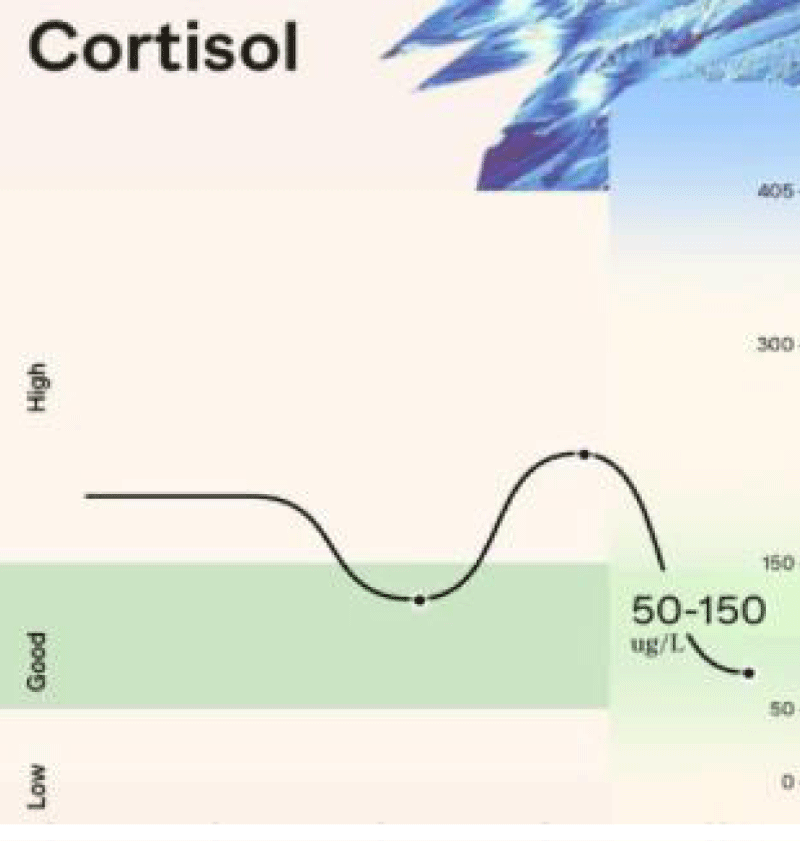
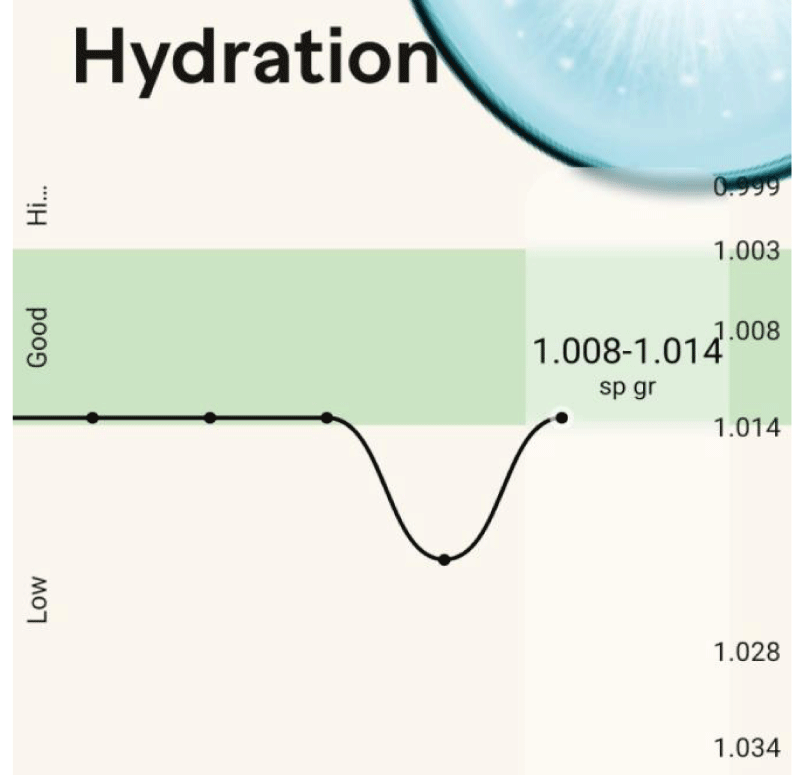
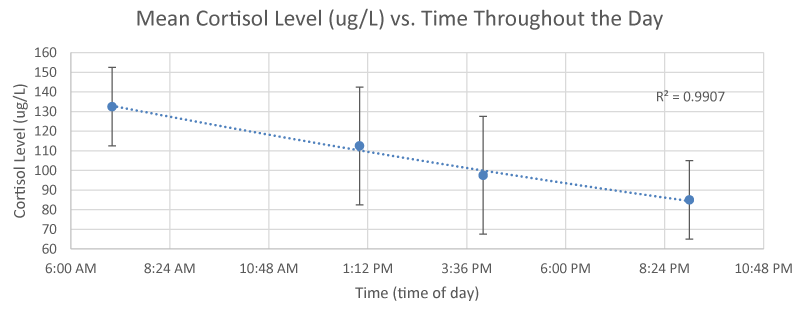
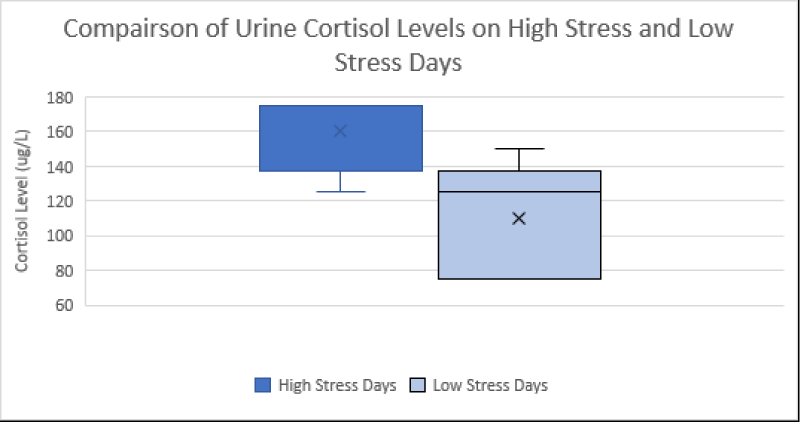
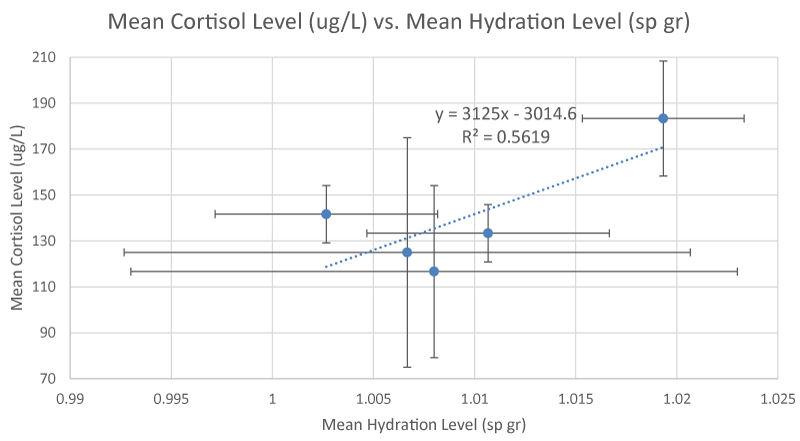
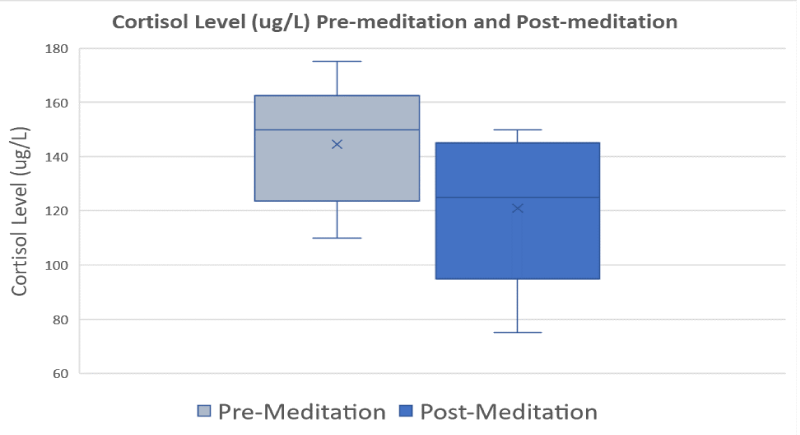

 Save to Mendeley
Save to Mendeley
